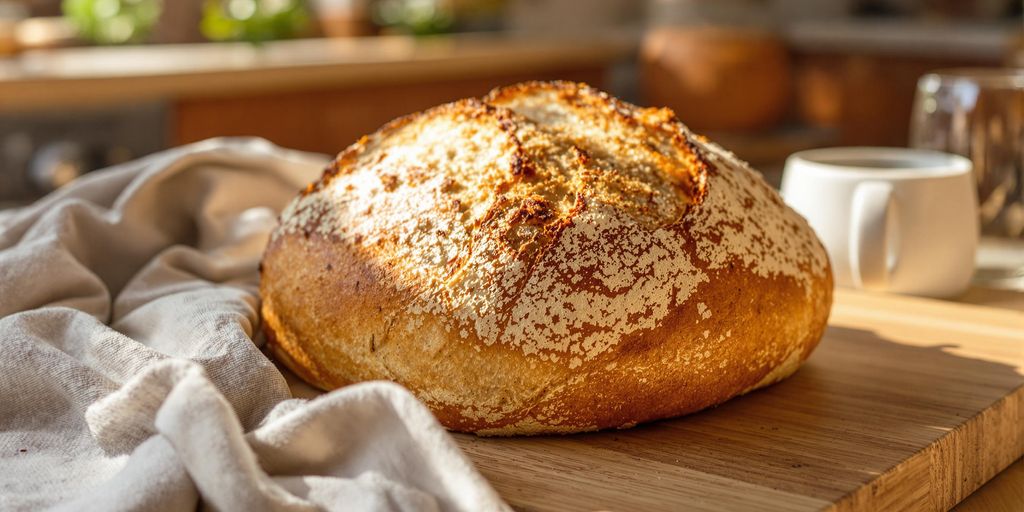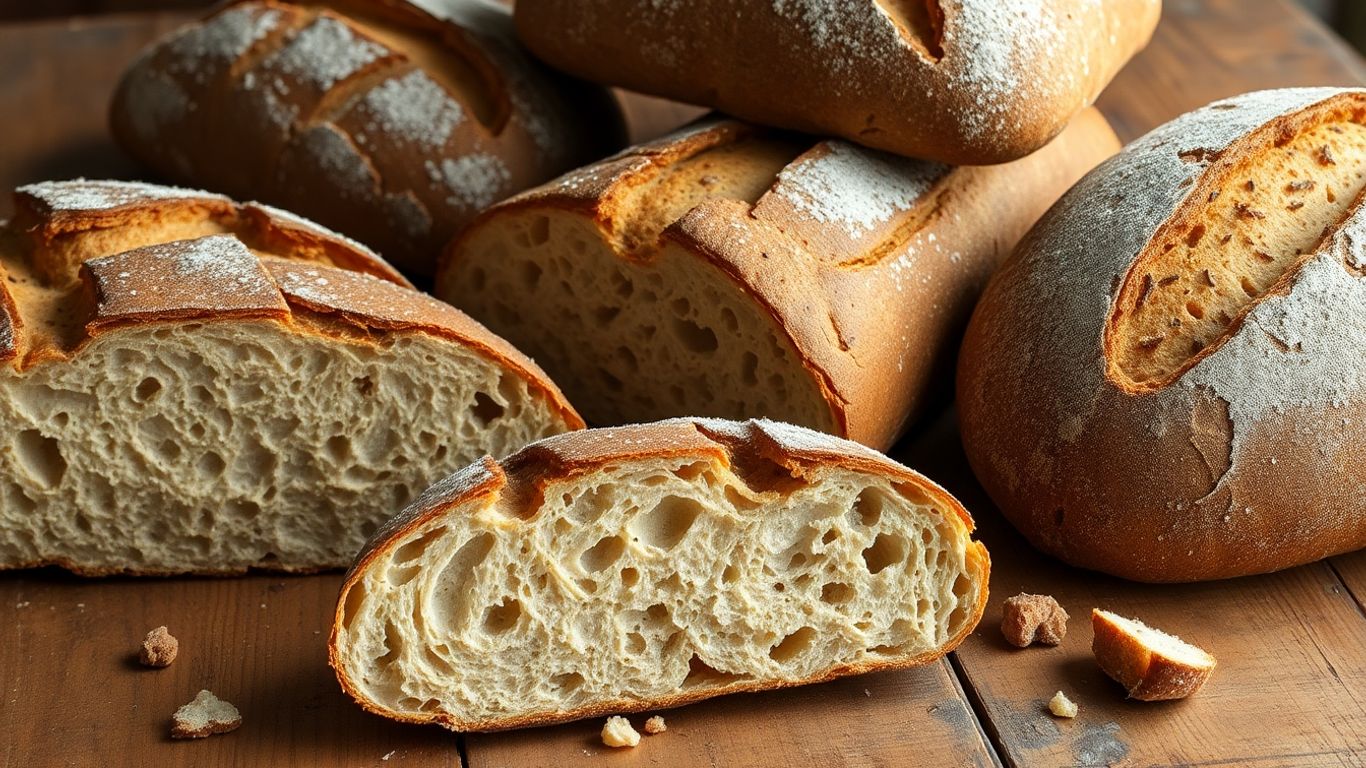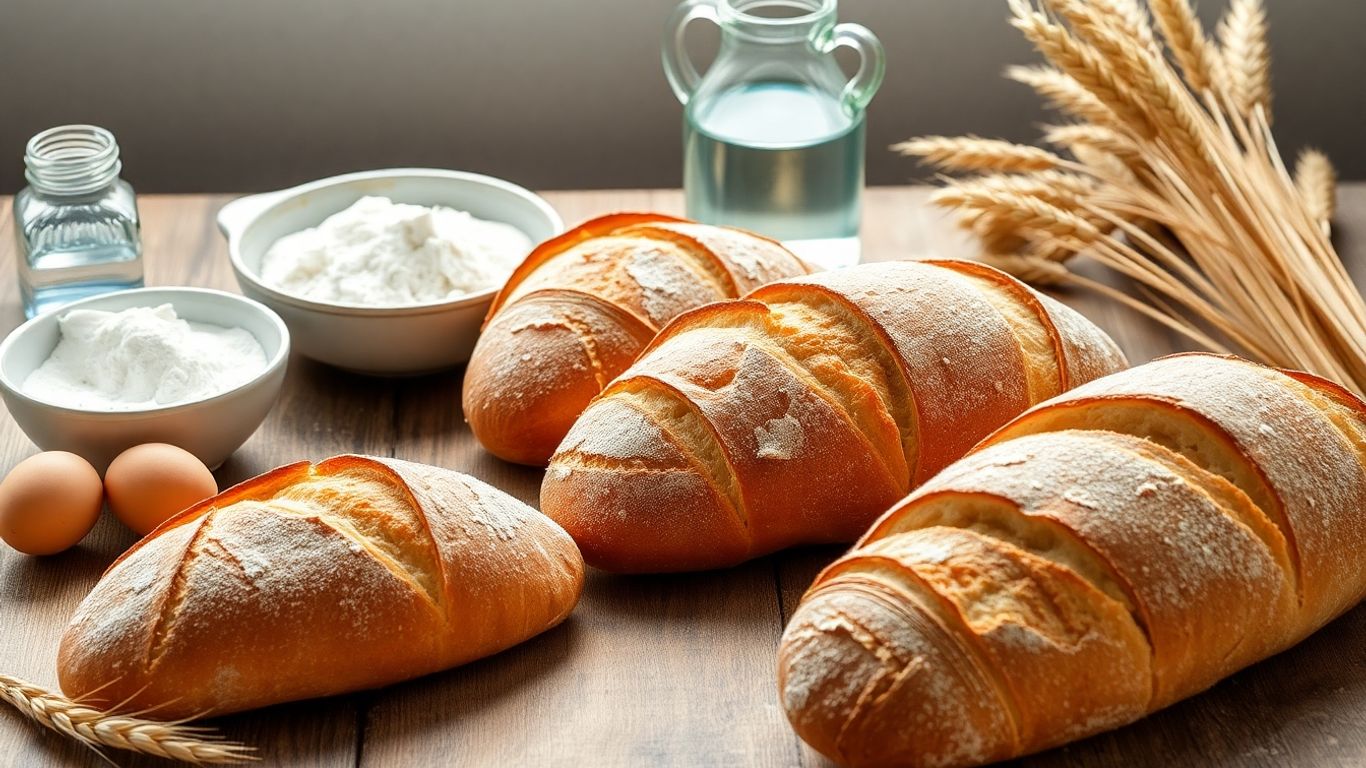We all love a good loaf of bread, don’t we? There’s nothing quite like that fresh-from-the-bakery smell and taste. But then reality hits – how do we keep that lovely loaf from going stale or mouldy too quickly? It’s a common problem, and trust us, we’ve been there. We’ve tried all sorts of tricks to keep bread fresh, and after a bit of experimenting, we’ve got some solid tips to share. No one wants to waste good bread, so let’s get into how you can make your delicious loaves last longer.
Key Takeaways
- A bread box is a great choice for keeping your bread just right, letting it breathe a little.
- Paper bags are good for short-term storage if you’re eating the bread quickly, but they don’t stop it from drying out much.
- Plastic bags can help keep moisture in, but they might make your bread go mouldy faster.
- Freezing is the best way to keep bread fresh for ages – just slice it first for easy use.
- Avoid putting fresh bread in the fridge; it can actually make it go stale quicker than leaving it out.
1. Bread Box
Ah, the classic bread box! We reckon this is where it all started. It’s not just a pretty addition to your kitchen counter; it’s a proper bit of kit for keeping your bread fresher for longer.
A good bread box aims to balance humidity and air circulation. It’s a delicate dance, really. Too much moisture, and you’re looking at mould. Not enough, and your loaf turns into a rock.
Think of it as a little climate-controlled haven for your bread. We’ve found it works best for whole loaves, especially those crusty artisan types we all love. Pre-sliced bread? Maybe not so much, but a good homemade loaf will thrive.
We’ve noticed that the size of the bread box matters too. A larger box allows for better air circulation, which is key. And don’t cram it full! The more bread you stuff in there, the higher the humidity, and that’s a one-way ticket to stale-ville.
Here’s a quick rundown of why we’re fans:
- Balances humidity to prevent mould.
- Allows enough air circulation to maintain a crusty crust.
- Looks rather stylish on the kitchen counter.
- Reduces the need for plastic bags, which is a win for the planet.
2. Paper Bag
We’ve all grabbed a paper bag from The Daily Knead at some point, haven’t we? It seems like a simple solution, and in some ways, it is. But let’s be honest, it’s not a long-term fix.
Paper bags are best for bread you plan to eat within a day or two. They allow the crust to breathe, which helps maintain that lovely crispness we all crave. However, this also means the bread loses moisture more quickly, leading to staleness. Think of it as a trade-off: great crust today, but potentially dry bread tomorrow.
If you’re using a paper bag, make sure it’s clean and dry. Avoid storing your bread near strong odours, as paper bags offer little protection against them. Also, consider double-bagging if you live in a particularly dry environment to slow down moisture loss.
Here’s a quick rundown:
- Pros:
- Maintains crust crispness.
- Simple and readily available.
- Allows bread to breathe.
- Cons:
- Bread stales quickly.
- Offers little protection from odours.
- Not suitable for long-term storage.
3. Plastic Bag
We’ve all been there, nipping to the shop and grabbing a loaf, only to find it’s gone a bit stale before we’ve had a chance to finish it. Using a plastic bag is a pretty common way to keep bread a bit fresher, but there are a few things to keep in mind.
- It’s a decent short-term solution. If you’re planning on using the bread within a day or two, a plastic bag can do the trick.
- The crust will soften. This is the trade-off. The bag traps moisture, which keeps the inside soft but makes the crust lose its crispness.
- Mould can be a problem. Because of the trapped moisture, mould can grow more quickly. Keep an eye on it!
If you’re using a plastic bag, make sure to squeeze out as much air as possible before sealing it. This will help to slow down the staling process. Also, don’t store warm bread in a plastic bag, as this will create even more moisture and encourage mould growth.
We reckon it’s better than leaving it out on the counter, but it’s not the best long-term solution, mind.
4. Freezer
Freezing bread? Absolutely! It might sound a bit odd, but trust us, it’s a game-changer. The freezer is brilliant for keeping your bread in tip-top condition, especially if you want to store it for more than a few days. Freezing slows down the staling process massively and stops mould from growing.
Think of it this way: freezing bread is like hitting the pause button on its freshness. When you’re ready to enjoy it, you can bring it back to life with a quick toast or a warm-up in the oven. It’s a simple trick that can save you from throwing away stale loaves.
Here’s how we usually do it:
- Slice it up: Before freezing, slice the entire loaf. This makes it easier to grab a few slices when you need them.
- Wrap it well: Use freezer bags and squeeze out as much air as possible to prevent freezer burn. We sometimes double-bag it for extra protection.
- Thaw and enjoy: You can toast the slices straight from frozen, or let them thaw naturally for sandwiches. For a whole loaf, a low oven (around 160°C) for about 20-30 minutes works wonders. You can find fresh bread at our local bakery.
5. Refrigerator

Okay, so we’ve all been there, right? Sticking the bread in the fridge because, well, it feels like the right thing to do. But let’s be honest with ourselves, is it really?
Turns out, the refrigerator might actually be the worst place for your loaf. It’s a bit counterintuitive, we know, but trust us on this one.
While it might seem like the cool temperature would keep your bread fresher, it actually speeds up the staling process. The cold air messes with the starch molecules, making your bread go hard and dry way faster than if you’d just left it on the counter. So, unless you’re aiming for rock-hard toast, maybe reconsider this storage option. If you are looking for baking tips, there are better ways to keep your bread edible.
Here’s a quick rundown:
- It accelerates staling.
- It dries out the bread.
- It’s generally a bad idea for fresh bread.
Keeping your fridge in tip-top shape is super important for making sure your food stays fresh and tasty. A well-kept fridge means your yummy treats and ingredients last longer, cutting down on waste and saving you a few quid. Want to learn more about how to keep your kitchen appliances running smoothly? Head over to our website for loads of helpful tips and tricks!
Wrapping it all up
So, there you have it! We’ve gone through some simple ways to keep your bread lovely and fresh for longer. It’s all about stopping it from drying out too fast or getting mouldy. We found that a few easy changes can make a big difference, whether it’s how you store it or even just how you slice it. Hopefully, these tips help you enjoy every last bit of your delicious loaves, meaning less waste and more tasty sandwiches or toast. Give them a go and see what works best for you!
Frequently Asked Questions
Do these tips work for all kinds of bread?
We’ve found that homemade and fancy bakery breads don’t have all those extra bits that stop mould and keep them soft. So, our tips are mostly for those kinds of loaves. Shop-bought sandwich bread often has stuff added to make it last longer anyway, so you might not need to do much with that.
Will these tips work everywhere?
Well, we did our tests in a special lab that controls the weather, and it was pretty hot and sticky here in the middle of America. So, if your place is different, your bread might act a bit differently too. Just something to keep in mind!
What’s the absolute best way to store bread?
We found that keeping your bread in a bread box or freezing it are usually the best bets. They really help keep it fresh for longer. We’ll go into more detail about each of these methods.
Should we put our bread in the refrigerator?
You might think the fridge is a good idea, but it actually makes bread go stale super fast! It’s better to avoid putting fresh bread in there if you want it to stay nice and soft.
Is it a good idea to slice bread before freezing it?
Yes, definitely! If you slice your bread before freezing, it’s much easier to just grab a slice or two when you need it. Then you can pop it straight into the toaster or microwave to warm it up.
How long can we expect our bread to stay fresh?
It really depends on how you store it. If you follow our tips, especially freezing, you can keep your bread good for weeks, even months! But if you just leave it out, it might only last a couple of days.







